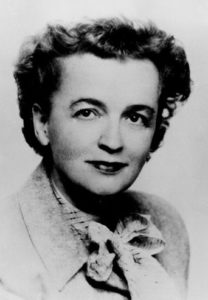The Cape May Resolution: On Ordaining Female Rabbis
On June 29, 1922, the Central Conference of American Rabbis (CCAR) gathered to debate on the most vital of questions: May women be ordained as rabbis? Meeting in Cape May, New Jersey, the convention invited both ordained rabbis – only male at the time – and women guests (mainly rabbis’ wives) to engage in conversation.
The New York Times published on the morning of June 29 that the majority of attendees felt in opposition to the motion of granting women ordination. In striking opposition, the next day, after tabling the vote, the rabbis in attendance voted 56 to 11 in favor of affirming the right of women to become rabbis, contending, “women cannot justly be denied the privilege of ordination.”
Indirectly inspired by the fervor of the 19th amendment (passed in 1920), we can also presume that the vote was directly influenced by a young woman named Martha Neumark, the daughter of a Hebrew Union College (HUC) faculty member. A 17-year-old student at HUC, Neumark petitioned for assignment to a high holiday student pulpit -like all her male rabbinical classmates – which brought into question her potential candidacy for rabbinic ordination.
Inspired by the “spirit of the time” and the “enrichment and enlargement of congregational life” produced by women’s engagement in reform congregations, the CCAR asserted that such a “revolution” in the status of women in society should surely apply to the reform Jewish community, as well.
Timeline of Events:
Spring of 1921: Martha Neumark, a woman, petitions Hebrew Union College for rabbinical ordination. Martha, at seventeen-years-old, was determined to seek rabbinical ordination. She was the daughter of David Neumark, an HUC professor of philosophy. Martha petitioned the faculty for permission to officiate at High Holiday services with the ultimate goal of full ordination. The faculty vote results in a tie. Kohler broke the tie by approving Martha Neumark to serve on a pulpit given the congregation assigned held no objections. Further, he suggested to the Board that they form a joint board-faculty committee to discuss and present a recommendation on the possibility of eventual ordination. The Board of Governors could not agree on a statement regarding female ordination; they referred the issue to faculty for discussion.
June 29, 1922: On the issue of female ordination, the Central Conference of American Rabbis reaches the resolution, “in view of the fact that Reform Judaism has in many other instances separated from traditional practice, it cannot logically and consistently refuse the ordination of women.”
February 27, 1923: The HUC Board of Governors goes against the CCAR resolution and resolves, in its ultimate that “no change should be made in the present practice of limiting to males the right to matriculate for the purpose of entering the rabbinate,” thereby restricting females from ordination.
Neumark was never ordained. In February 1923, three years after the Cape May Resolution, the HUC governing board voted to bar female ordination on the grounds of an absence of any practical needs for such a step. While women could attend the college and participate in rabbinical curriculum, they could only earn non-ordination degrees. Not until 1972, fifty years after the CCAR Cape May Resolution, was the first female, reform rabbi ordained: Rabbi Sally Priesand.


